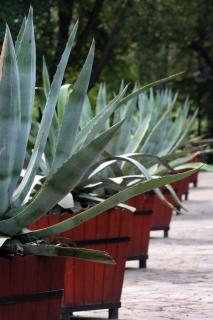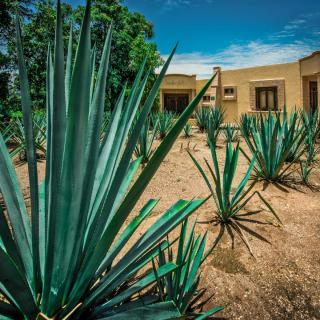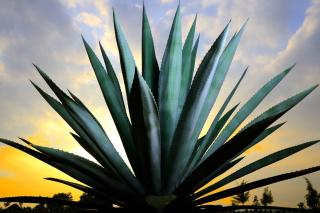

With its one-of-a-kind designer-like silhouette, agave helps make your garden seem to come from out of this world.
Basic agave facts
Botanical name – Agave sp.
Family – Agavaceae
Type – succulent plant
Height – 12 inches to 15 feet (30 cm 5 m) depending on the species
Exposure – full sun
Soil – light, well-drained, neutral to acidic pH
Hardiness: average – Flowering: summer (rare) – Foliage: evergreen
Agave is a succulent plant native to Mexico. It’s easy to recognize thanks to its thick, fleshy leaves that are lined with sharp teeth and tipped with a sharp spike that you’ll quickly learn to respect. The leaves unfurl in a rosette-like pattern that is very typical. A plant that evolved to survive in the harshest environments, there are some regions where agave won’t grow very easily. It’s nonetheless possible to grow it in a pot, which makes bringing it indoors over winter easier.
To thrive, this succulent plant needs 3 things:
When you’ve chosen the spot, all you need to do is:
Since Agave doesn’t fear lacking water, the ideal planting time is spring. Make sure to leave a planting distance of about 1 ½ feet (40-45 cm) between two plants for smaller species, and up to 3 or 4 yards or meters for larger ones.
Perhaps you live in places where winter is harsh, but you’ve already fallen in love with this species of succulent plant and definitely will give growing it a try. Worry not, it’s possible to grow agave plants in pots, as long as you follow certain rules:
 Select a voluminous pot that has lots of holes for drainage.
Select a voluminous pot that has lots of holes for drainage.Smart tip: After planting, spread a layer of flint stones or white rocks around your plant. They’ll mirror the sun’s heat back up to the plant!

For potted agave, too much water will quickly lead the stem to rot: only water when the substrate is dry. In winter, there’s no need to water at all.
It isn’t necessary to prune your agave.
Depending on the species, you can propagate a specimen through seed, or by removing an offshoot from the side of the plant in spring or summer to transplant it elsewhere.
Although agave is not very vulnerable to disease, it might however attract scale insects.
Agave is clearly THE plant to grow in poor and dry substrates. It’s also ideal to set up a maintenance-free garden or to create an exotic atmosphere, together with a barbary fig cactus for for instance.

Its leaves are elongated, tinted in a bright green hue and each grows 3 to 6 feet long. There’s also a ‘Variegata’ cultivar which has green and ivory-white leaves.
When it blooms, Agave americana shoots a floral scape up that can reach over 30 feet (10m) with many white or cream-colored flowers clustered in little bunches.
It’s very common to get agave confused with Aloe vera. There’s an easy way to tell them apart: only agave has a spike at the tip of its leaves.